La vorágine, by José Eustasio Rivera: summary, analysis and characters of the novel
The maelstrom is a novel written by the Colombian author José Eustasio Rivera. It was published in 1924, and is considered Rivera's masterpiece and a classic of Colombian and Latin American literature.
The novel is a work of social denunciation about the violence and the situation of exploitation that took place in the Amazon rainforest as a consequence of the rubber fever between the end of the 19th century and the beginning of the 20th century.
The novel is written in a style that reveals influences from both romanticism and modernism, as shown by the following sentence that opens the book:
Before I had a passion for any woman, I played my heart at random and violence won.
Summary of the novel
The maelstrom It contains a prologue, an epilogue and is divided into three parts. Most of the novel is narrated by the main character, Arturo Cova, a poet who decides to flee with his lover Alicia to Casanare.
On The maelstrom, some of the issues that stand out are the following:
- The nature of the Colombian-Venezuelan plains and the Amazon jungle, and its influence on the character of its characters.
- The social denunciation of the violence and exploitation of the rubber tappers against many people, mostly Colombians, representative of all ethnic groups, genders and regions (Indians, women, whites, blacks, children, mestizos, mulattoes).
- The failed romances.
Here is a complete summary of the novel.
Foreword
It was written by José Eustasio Rivera and is addressed to the Minister of Colombia. The author makes reference to the situations of the Colombian rubber tappers, and to Arturo Cova's manuscripts, "criticizing" their style full of regionalisms.
First part
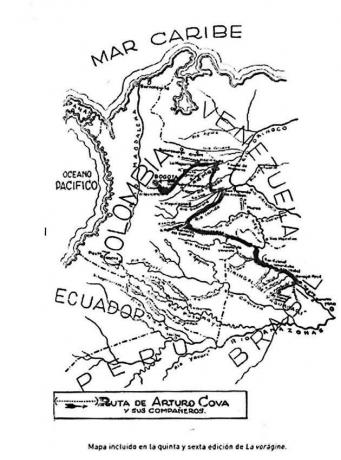
Arturo Cova tells us the story of him and Alicia. Alicia was doomed to marry an old but rich landowner. She decides to have an affair with Arturo Cova, a cultured poet, womanizer and poor, hoping that this will save her from her marriage.
But Alicia's fiancé condemns Arturo to jail, and the pair of lovers decide to flee to Casanare. There they meet friends who welcome and help them: Don Rafo, and the couple of Griselda and Fidel Franco.
Franco, who has a foundation, pawns it with the promise that Zubieta, the owner of a large herd with a lot of cattle, will sell him 1000 cattle on sale, but in exchange he must take them. This turns out to be a lie by Zubieta in order to get rid of Barrera, a rubber tapper that he promised gold and riches seeking to convince everyone to follow him in the exploitation of the Rubber. Among these people is Griselda, whom Barrera sought to convince with sweet promises and gifts.
Griselda and Alicia, who used to go out alone, often found Barrera. Arturo explodes in jealousy at the possibility that Alicia is unfaithful to him with Barrera, gets drunk and decides to flee to Zubieta's herd. There he confronts Barrera, who shoots him in the shoulder.
Arturo goes out together with the mulatto Correa after Franco to catch the bulls, but upon his return he discovers that Barrera has ordered the assassination of Zubieta. Barrera brings in a corrupt judge, and forces the other workers to be witnesses that the crime was committed by Arturo and Franco.
They both discover that Griselda and Alicia have abandoned them. They explode in anger, madness and euphoria, set fire to the plains and flee:
The devouring phalanx was leaving fires in the blackened plains, on the bodies of charred animals, and throughout the curve of the horizon the trunks of the palm trees burned like huge candles.
The clatter of the bushes, the howling chorus of serpents and wild beasts, the throng of Pavorian cattle, the bitter smell of burning meats, entertained me with pride; and I felt delight in everything that died behind my illusion (...).
Second part
Arturo Cova, Franco, Correa and El Pipa flee to Vichada. There they find different indigenous tribes. There are the aborigines of the hut, described as docile, cunning and distrustful, who supply them for the journey.
Then they find the nomadic tribe of the Guahibos. They are described as a naive, superstitious and rudimentary tribe. Arturo and his comrades are welcomed by the tribe, which dismisses them with a great party to the rhythm of drums, dances and fermented chicha.
When resuming the trip, they happen to meet Helí Mesa, who had been under the command of Fidel Franco when he was still part of the army.
Helí told how he was deceived by Barrera and how he had betrayed all the men and women who followed him. He had made them give up all his possessions and left them as slaves under the rule of two of his comrades. They were chained and a baby was thrown at the alligators.
In the midst of these abuses, Helí takes the opportunity to escape together with two Maipireño Indians. The fugitives decide to continue towards the Vaupés, seeking revenge on Barrera. The Maipireños perish in one of the strong waterfalls of the river. El Pipa escapes with the Guahibo Indians.
In Guaviare they meet the old rubber tapper Clemente Silva. The old man, who is very ill, has his legs full of sores, and, among the sores, worms. He has suffered all kinds of abuse for 16 years. His back is covered in whiplash scars. The old man tells that he is originally from Pasto, and went in search of his 12-year-old son, who had fled with the rubber tappers. After having been looking for him for eight years, during which he himself was a rubber tapper and a slave, he finds him already buried.
Third part
Cova and his companions continue their journey together with Clemente Silva. They propose to collect the bones of Silva's son, which were confiscated by Cayeno, and then continue with his revenge.
Clemente Silva goes on to narrate how he changed owner from rubber tapper to rubber tapper. Silva sought to stay near the grave of his son, in the Brazilian jungles, until he could exhume his bones. During this time, he spent two months lost in the jungle, during which he lost his reason and his companions perished.
Cova and her companions come to see the madonna, Zoraida Ayram, who asks that they "betray" Cayeno in the name of a debt that he owes her.
There they meet Ramiro Estévanez, an old friend of Cova, and Váquiro, who witnessed the San Fernando del Atabapo massacre, under the rule of Colonel Funes. Cova, to win the Madonna's favor and trust, becomes her lover.
Cova and his companions find Griselda, who was acquired by the madonna, and brings news of Alicia. He assures that Alicia was always faithful to Arturo, and she is still Barrera's slave.
Arturo finally manages to reconnect with Alicia, and fighting defeats Barrera. Alicia gives birth to a seven-month-old son of Arturo, and fearing that the newborn will catch some plague, they all flee to the jungle.
Epilogue
It is the fragment of a letter that the consul of Manaus addresses to the Colombian minister and that gives an account of the fate of Cova and his companions with this phrase:
No sign of them. The jungle devoured them!
Novel characters
The vortex contains a set of characters traversed by the violence of rubber exploitation and love. Next, we will tell you one by one who the main characters of the narrative are.
Arturo Cova
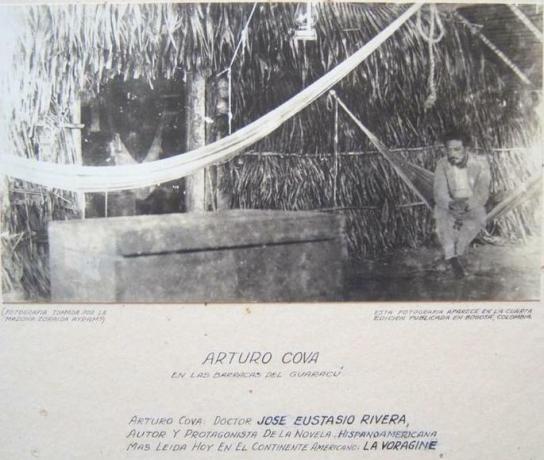
Arturo Cova is the narrator and the main character of the novel. He is a young man from Tolima who studied in the capital. He is an intellectual and a poet.
Seeking to escape from prison, Arturo decides to flee with his lover, Alicia, and sets off on an adventure escaping to the jungle.
He tends to daydream, brood, and ramble. He lives in love with love, more than with any specific woman, and has a certain romantic nostalgia.
He dreams of falling madly in love, of growing old with his beloved, in some remote place and with a simple life.
Often times, his educated and cultured character is interrupted by impulsive attacks coupled with alcohol abuse, unhealthy jealousy, and a taste for gambling.
She has moments of utter madness, irrationality and destruction, in which she loses even the notion of time. He is morally weak, but is faithful to his friends.
Fun fact: the character Arturo Cova existed in real life, and Rivera may have met him (or heard about him) on his travels, and was able to draw on him to create his character.
A couple of testimonies say that she knew Arturo Cova: the first affirms that he was a rubber tapper who was in charge of 16 peons; the second claims that she met Arturo Cova and he sold the manuscript of his diary to Rivera.
Alicia
Alicia is a young woman from the capital, educated in piano and sewing. She is very fearful, she does not know how to ride a horse and her skin suffers from the sun's ray.
We know this character from his dialogues with Arturo, and from Arturo's descriptions, which change according to his mood.
Often Alicia suffers, cries, or endures the fever of some disease contracted in the jungle.
Also, we know her for her reproaches to Arturo for her due to her infidelities, and, above all, for having condemned her to the jungle. Perhaps this is why she treats him with indifference. Alicia has a sad look and voice. About the beauty of him, Arturo says:
"She's not really pretty, but where she goes, men smile."
Clemente Silva
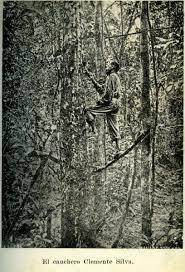
Clemente Silva is a very old and sick rubber tapper, originally from Pasto. He becomes a rubber tapper looking for his 12-year-old son. The boy fled with the rubber tappers and this was the only relative he had.
The old man is enslaved and, after searching for his son for 8 years, he finds him already dead. Since then the old man carried her bones as the only treasure.
He is considered by all to be a trustworthy, venerable and wise man. His body is covered in the scars left by the lashes of his masters, and his calves are full of maggot sores left on him by leeches.
She still retains her sanity, honor, and common sense, and has come out of the madness that the jungle produces in men. She is the "rumbero" with more experience, that is, she is the one who is located and knows better which way to take in the jungle.
The Griselda girl
The girl Griselda is a cheerful, flirtatious and plump mulatto. She is kind and friendly. Although she is the wife of Fidel Franco, she flirts with Arturo Cova and is one of his lovers.
She is close friends with Alicia, and although she is not described as a beautiful woman, she (according to Arturo she is simple and ordinary) she knows how to attract men with her charisma. This is the first impression we have of her:
"She was a dark and stocky female, neither tall nor short, with a plump face and sympathetic eyes. She laughed, showing her wide and very white teeth, while with a skillful hand she squeezed the dripping hair over her unbuttoned bodice. "
Fidel Franco
Fidel Franco is of Antioquia origin. He studied in the capital and later entered the army. It is rumored that he withdrew from the army after assassinating his captain for having an affair with Griselda.
He has the character of a leader. He is the companion of madness, fires and revenge of Arturo Cova. This is the first description we find of him:
"He was gray and pale, of medium height, and perhaps older than me. She suited her surname to her character and physiognomy, and her words were less eloquent than her heart. The proportionate features, the accent and the way of shaking hands warned that he was a man of good origin, not coming from the pampas, but coming to them. "
Clarita
Clarita is a Venezuelan fallen from grace. As a simple merchandise, she was bet and lost by a Venezuelan guerrilla. She ends up abandoned in Zubieta's herd.
Since then, she has tried to pay for her return trip to Venezuela by winning the favor and liking of men, although she always receives false promises from them.
Physically the gold teeth of him stand out. His dream is to return to his homeland, Ciudad Bolívar, and ask his parents for forgiveness.
The Pipe
He came to work on a large ranch in the plains when he was just a teenager.
After enduring all kinds of abuse, he murders one of his abusive partners. Sentenced to death, he is rescued by the Indians.
The Pipa has lived with different indigenous tribes and ethnic groups; he speaks more than twenty aboriginal languages. He can locate and survive in the jungle on his own. He is very good at deceiving: he tells all kinds of adventures in which it is difficult to know where the truth is. He has been in prison many times.
El Pipa does what is necessary to survive: he is a robber, pirate, rower, rubber tapper, cowboy, steals, sets fires, disguises himself, betrays.
The old Zubieta
He is the wealthy owner of a large herd and many head of cattle. But he has a great weakness for alcohol and gambling.
Many try to get Zubieta to sell them cattle at a low price, but he is very clever: between jokes and jokes, games and bets, tricks and deceptions, he never lets himself be won.
He frequently finds himself drunk in the hammock, oblivious to the work of the herd and its workers.
Barrier
He is a rubber tapper who has come to Casanare seeking to be followed with promises of easy wealth, gifts of silks, perfumes, photographs and fine merchandise.
He dresses elegantly and, when it comes to flattering, convincing and winning the favorable opinion of his enemies, he is extremely exaggerated in his speeches.
He is very adept at showing himself as everyone's friend or a great victim, and is capable of pretending to humiliate himself before his enemies to win his favor.
Novel analysis
On The maelstrom fiction and reality begin to merge: journalism, chronicles and literature. The prologue and the epilogue, addressed to the Colombian minister, are a wake-up call to the government of the New Granada nation.
The resource of the use of an original manuscript, awarded to the adventurer Arturo Cova, on which it is based The maelstrom, comes from Don Quixote, a novel that claims to be based on the manuscripts of Cide Hamete Benengeli, and serves to give credibility to the story.
In addition, in the historical records there is Arturo Cova, a man involved in the business of the exploitation of rubber, and some witnesses say they have known him.
In the first publications of the novel a couple of photographs also appeared: in the first, a man sitting in a hammock, identified as Arturo Cova, and in the second, a man climbed in a tree bleeding the rubber, identified as Clemente Silva.
Also, many of the characters were based on real characters. Narciso Barrera was based on Julio Barrera Malo, who was a rubber tapper dedicated to deceiving people in Meta and Vichada. He gave them trinkets and promised them riches. People followed him along the Orinoco and Negro rivers, where he sold them as slaves to rubber tappers with whom he had acquired debts, such as Miguel Pezil, who appears in The maelstrom as the Turk Pezil, and Tomás Funes, who appears as Colonel Funes.
There is also the insertion of stories through witnesses who are also characters in the novel. Thus, we learn details about the outrage system and how they managed to perpetuate the slavery of the rubber tappers thanks to Clemente Silva's story.
Also the massacre of San Fernando del Atabapo in Putumayo by Colonel Funes is narrated in detail by Váquiro.
The use of narrative resources, such as the manuscript, photographs, the use of testimonies and interviews, serve to give credibility to the narrative as a true fact, documented based on real sources, just as in the journalism. This is in response to the intention of drawing the attention of the government and the international community to intervene and put an end to the abuses.
If you want to know more about the exploitation of rubber tappers in Colombia, you may be interested The embrace of the serpent.
Historical context of the novel
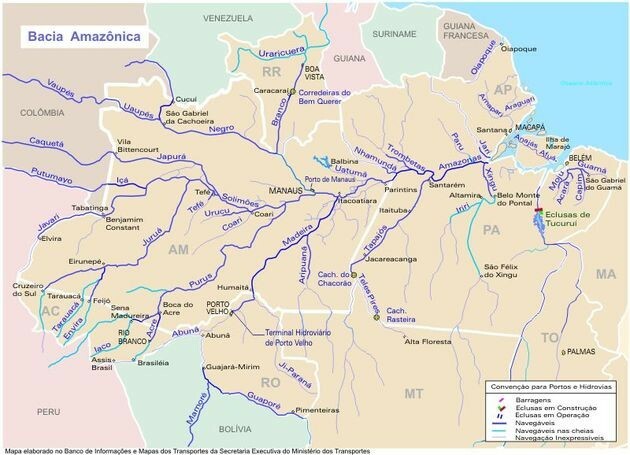
The author belongs to the centennial generation, which was concerned about reflecting on the political, cultural and bordering establishment of Colombia as a nation.
In the climate of the moment, border problems were in vogue. Many territories were ceded to neighboring countries at the beginning of the 20th century.
The borders and territories in which the jungle predominated, in which it was difficult to penetrate, were abandoned by the government. These included all the departments part of the Amazon region: Caquetá, Guainía, Guaviare, Putumayo, Vaupés, Meta, Vichada and Amazonas. Abandonment allowed corruption, guerrillas, and exploitation by nationals and foreigners to flourish.
Writing history of The Maelstrom
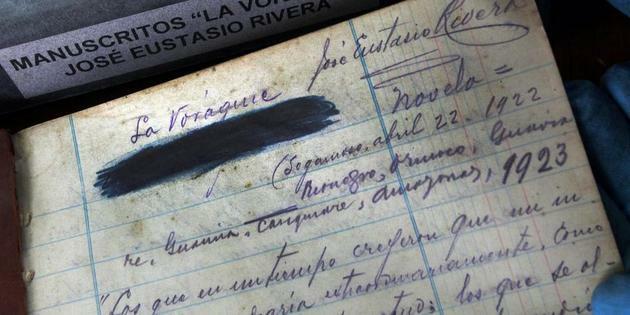
The maelstrom It was written in two years during the trips that Rivera made with the Colombian-Venezuelan Border Commission, in 1922, whose function was to draw the limits in the jungle between the two countries.
The conditions of the commission were so precarious that they did not have maps or the basic instruments for their work. For this, Rivera resigned and continued alone.
The commission began its route through the Magdalena River, then entered the Orinoco.
Rivera continued his journey alone until he contracted malaria in a hamlet in Orocué, where he wrote much of his novel. There he met a former commission partner and decided to reintegrate.
He continued his trip to Manaus and then back, documenting during his trip the exploitation of rubber tappers in the jungles of Venezuela, Colombia and Brazil.
Free download The maelstrom
Do not stop reading this classic of Colombian literature. Download the illustrated and interactive version created by the Colombian government for the national reading plan, with videos, galleries and vocabulary: The maelstrom, interactive version.
The maelstrom and its adaptations
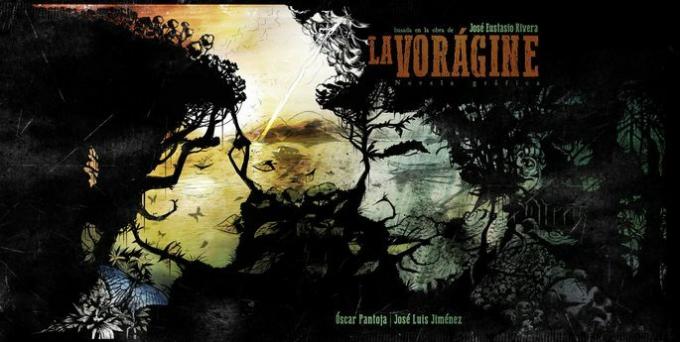
The maelstromBesides being a masterpiece, it is a classic that continues to generate new readings, adaptations and interpretations in the different expressions of the arts.
As early as 1931, Rivera's work had inspired the musician and composer Jesús Bermúdez Silva for his work Whirlwind.
For his part, in 1949, the Mexican film director Miguel Zacarías brought to the big screen an adaptation of the novel entitled Abysses of love.
In Colombia, the novel has found an echo in the television format with two miniseries, one from 1975 produced by RTI, and the other in 1990 shot in seven episodes by RCN.
Likewise, in 2017, Rivera's work was turned into a graphic novel by Óscar Pantoja and José Luís Jiménez and published by Resplandor Editorial.
About José Eustasio Rivera
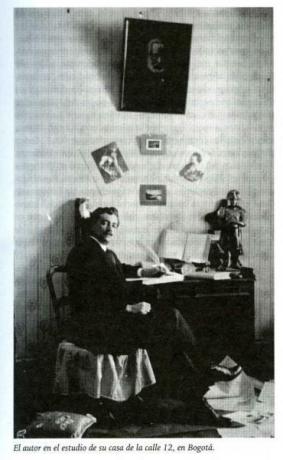
Rivera (1888-1928) was born in Huila, in a town then called San Mateo, (today it is Rivera in honor of his last name). His parents were dedicated to different tasks in the field, and two of his uncles were generals of the Republic.
Rivera was educated in religious schools where he excelled in his skills with letters. He studied on a scholarship at the Normal School of Ibagué and later entered the Faculty of Law and Political Sciences of the National University. He graduated as a lawyer with the thesis Settlement of inheritances.
He was recognized for his early poems and sonnets. His first book, Promised land (1921), consists of fifty-five sonnets. In his sonnets, landscape and geography are the protagonists to which the writer gives strength from his subjectivity. The maelstrom it is his great masterpiece. The writer died in New York in 1928, due to an unknown disease, although it is suspected that he may have contracted it in one of his trips to the jungle.

